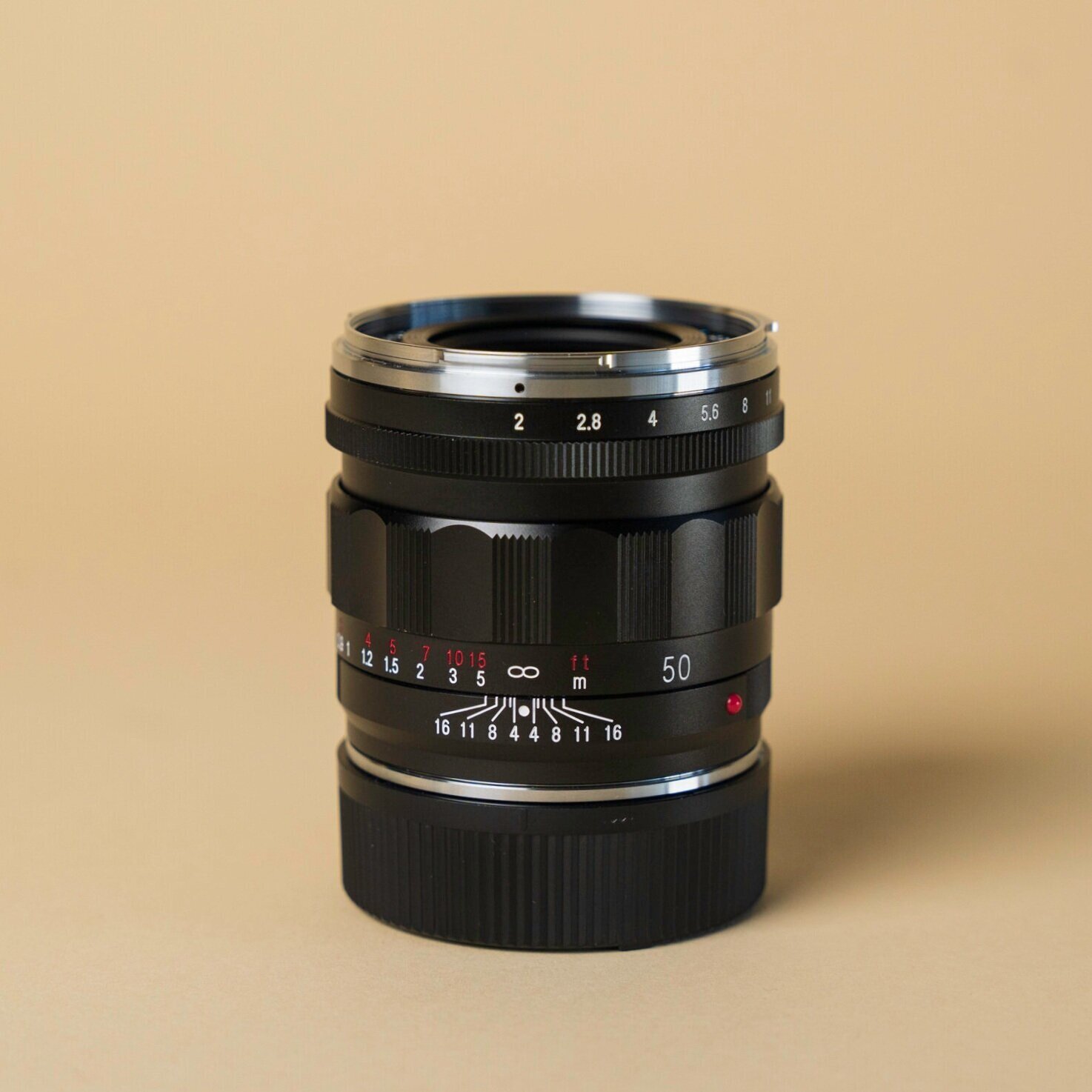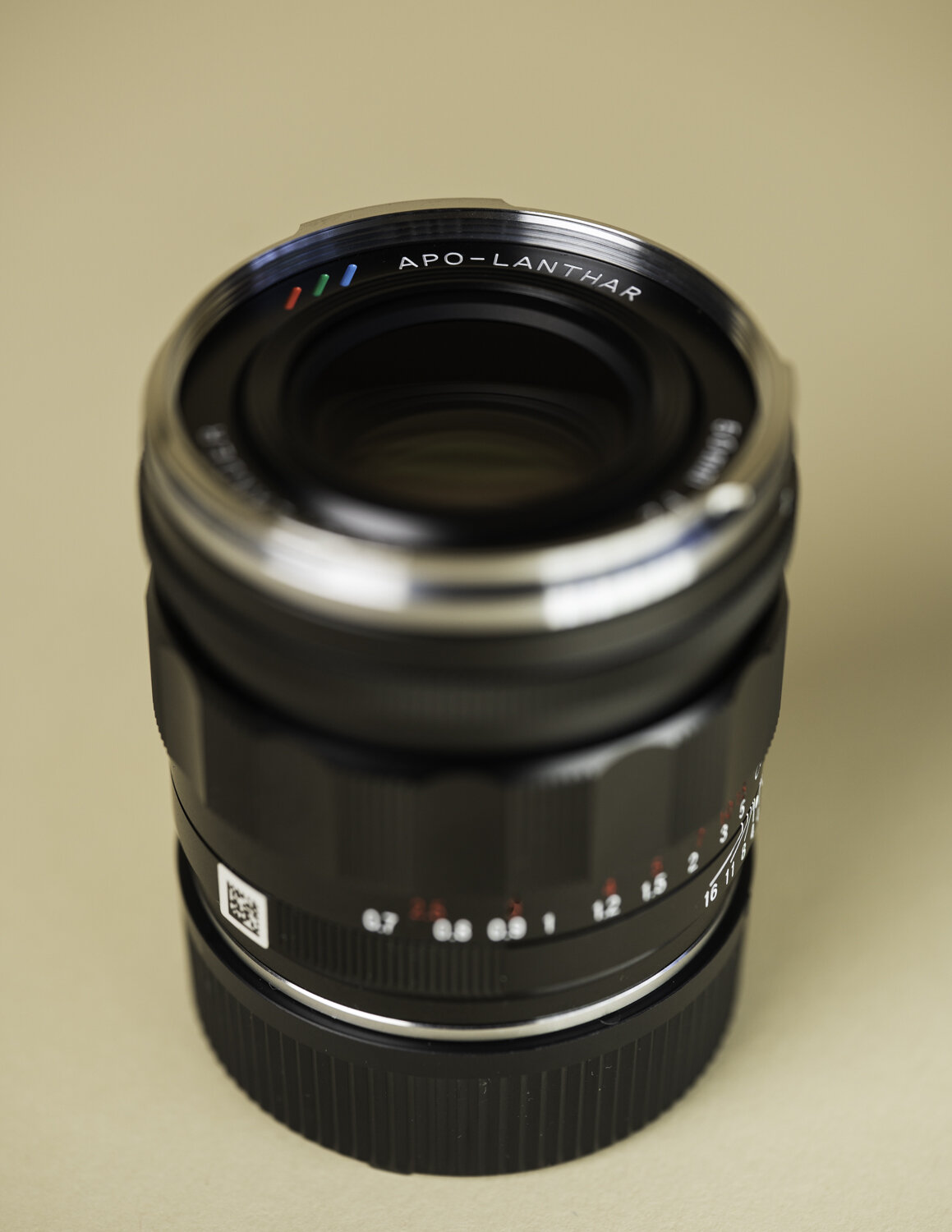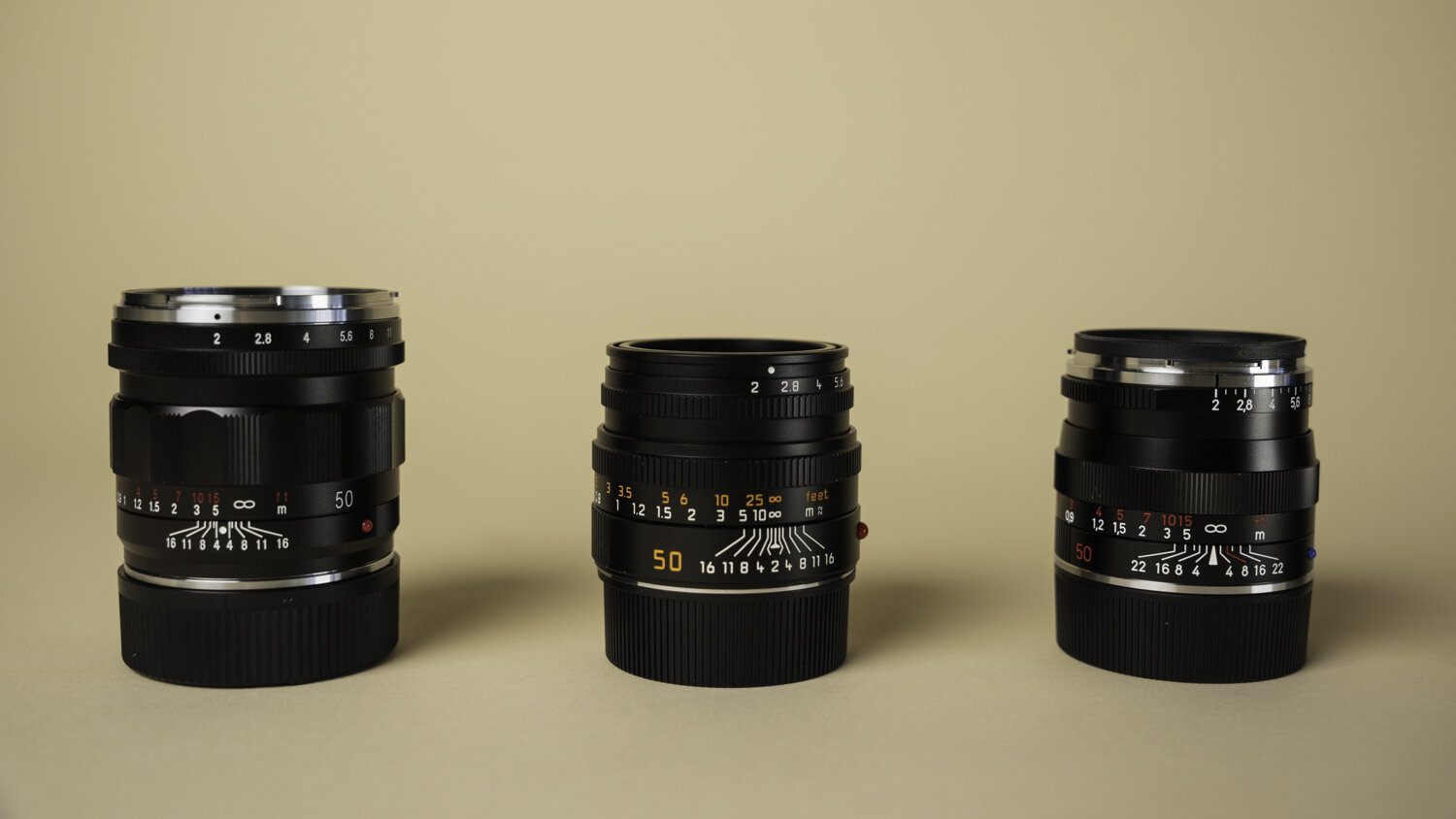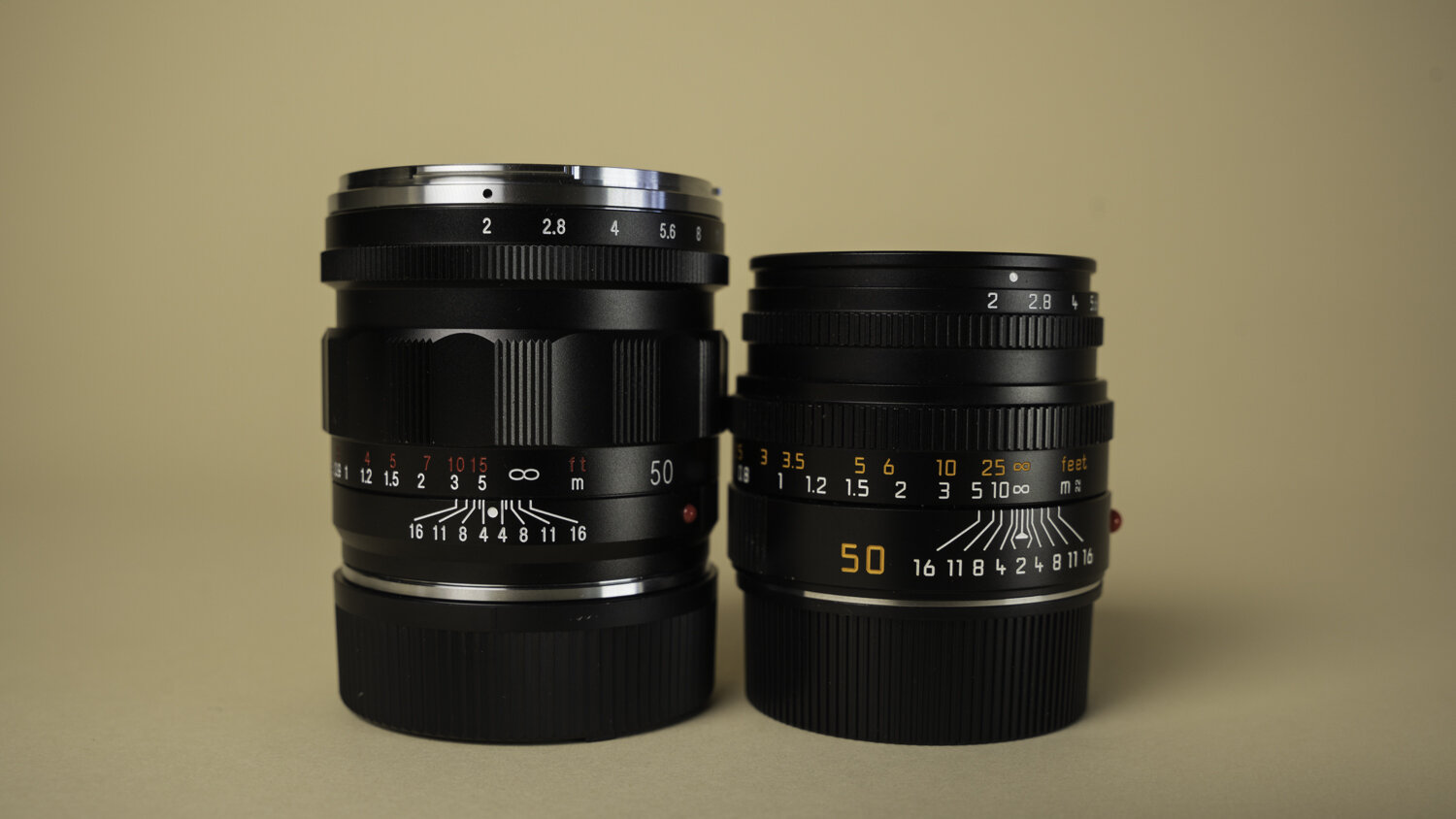Review: Voigtlander 50mm f/2 APO-LANTHAR VM for Leica M
Intro
If you've been looking for budget friendly alternatives to classic Leica lenses, then Voigtlander is a brand you've probably come across. Voigtlander lenses (distributed by Japanese company Cosina) have been very popular choices for photographers looking to save a couple thousand dollars on Leica M glass. Most modern Voigtlander lenses have excellent optical and build qualities that rival Zeiss and Leica lenses. This 2021 release is no different and is quite possibly the best lens that Voigtlander has released to date. The Voigtlander 50mm f/2 APO-LANTHAR VM is finally here for the Leica M mount after appearing on the Sony FE system in 2019.
Specs
Focal Length: 50mm
Leica M Mount
Minimum Focus Distance: 70cm/.7m
Max Aperture: f/2
Minimum Aperture: f/16
Optics: 10 Elements in 8 Groups; 12 Diaphragm Blades
Weight: 288g
Dimensions (Diameter x Length) 55.6mm x 53mm / 2.2" x 2.1"
Filter Size: 49mm
Weather Proofing: None
Price: $999 USD on B&H Photo
Build Quality
This lens feels amazing to operate with. Modern Voigtlander lenses have a great build quality to them and the 50mm APO-LANTHAR is no different in this regard. The focusing ring is incredibly smooth and it creates a pleasant experience when obtaining focus on portraits. There is no focusing tab on this lens but personally I prefer a standard focusing ring on lenses of this length. Another thing to note is that this lens does not come with a lens hood. Purchasing a lens hood (Voigtlander LH-13) will cost another $129 USD.
The aperture has defined clicks and adjusts in half stops from f/2 to f/16. The markings and text on the lens barrel are a little difficult to read at times. The text is rather thin and the crimson font color they chose for the feet distance indicator is a bit too dark and might blend in with the black color of the lens barrel at times. It's a small complaint but it becomes quite noticeable how pleasant the distance indicators on the Zeiss Planar 50mm f/2 and Leica 50mm f/2 Summicron are in comparison to the Voigtlander.
In the following photos you’ll see that the Voigtlander is larger than the Leica Summicron and Zeiss Planar and the weight difference is noticeable. This isn’t enough to be cumbersome but it is something to keep in mind if you consider weight a priority when carrying your equipment around.
The optical design of this lens consists of 10 glass elements in 8 groups with 12 diaphragm blades which aid in bokeh quality. This lens has an APO classification in its name, indicating that the lens has an apochromatic design which drastically mitigates color fringing and chromatic aberrations. The RGB colored lines near the front element are a nice touch in tribute to its design. This overall glass construction is excellent and you can see the amazing performance of this lens in the next section.
Performance
I used the Voigtlander 50mm APO-LANTHAR f/2 on my Voigtlander Bessa R4A and my Sony A7c. I must preface that the quality of your image will be significantly better if you're shooting with a digital Leica M body since the Sony sensor is not optimized for M mount glass. However, you can see the relative difference in quality and performance when I compare the images of the APO-LANTHAR with other 50mm M lenses in the same category. Personally, I use most of my M mount lenses on my R4A and my Leica M5 and certain lens qualities aren't as pronounced on film.
The first impression you will receive from this lens is that it is incredibly sharp. It definitely has a more modern rendering but the sharpness of this lens isn't overwhelming. Contrast is strong and saturation is very bold at f/2. It's hard to deny the claim others have made that this is quite honestly the best performing Voigtlander lens to date.
One important thing to note is that vignetting is quite apparent at f/2 if you're adapting this lens to other digital bodies like a Sony mirrorless camera. The vignetting is less apparent with my film photos but it's definitely more noticeable compared to the standard Leica 50mm f/2 Summicron. Distortion is quite minimal and both vignetting and distortion are easily adjusted if you apply a Lightroom correction with the Sony FE profile of this lens.
Test Images
True to the apochromatic design of this lens, chromatic aberration is minimal or practically non-existent. The photos below have not been corrected for chromatic aberrations within Lightroom nor have they been adjusted with a profile to correct for vignetting or distortion.
If you're very strict about your preference in bokeh quality, you'll be happy to see just how beautiful the out-of-focus areas are with this lens. The rear bokeh quality of the Voigtlander has the smoothest transitions between out-of-focus elements in the image. No other 50mm f/2 lens that I tested against the Voigtlander came close to having such pleasing rear bokeh rendering. What's very odd is that objects that are in front of the focal plane have slightly distracting bokeh qualities compared to objects that are in the distance.
The images below demonstrate the difference in out-of-focus elements between the Leica Summicron (Top) and the Voigtlander APO-LANTHAR (Bottom). Click on individual images for a larger view.
Notice how smooth the out of focus area is in the rear for the Voigtlander compared to the Leica but the bokeh nearest to the camera is more defined and sharp on the Voigtlander. It's not the biggest deal breaker and to be quite honest I don't think most people will notice this unless if you're pixel-peeping every out of focus element near the camera.
Both lenses have a swirly cat-eyed bokeh with the Leica having more spherical shapes to its bokeh balls.
Here are shots of the Voigtlander 50mm f/2 APO-LANTHAR at f/2 against other popular 50mm f/2 lenses:
Something interesting to note is that the Voigtlander has a slightly wider field of view than the Leica Summicron. The Zeiss Planar has the widest field of view with very little vignetting at f/2. I threw my Konica M-Hexanon 50mm f/2 in the mix as a budget choice to compare to the other popular 50mm lenses.
Test chart images at f/2 for center sharpness, corner sharpness, and levels of chromatic aberration.
My order of rankings for performance purely from this test chart is:
Voigtlander APO-LANTHAR
Leica Summicron
Zeiss Planar
Konica M-Hexanon
The Voigtlander had superb sharpness and consistent image performance across the frame. The Leica is a little softer on the corners, but I’d expect the corner softness to disappear on a true Leica digital camera. The Zeiss Planar has some color fringing in the corners and the Konica has obvious chromatic abberation going on the edges of the image. Overall, the Voigtlander, Zeiss, and Leica produce amazing images and the Konica holds up relatively well. However, it does speak volumes when I can instantly spot just how much cleaner the images out of the Voigtlander are.
Sample Images
Click on the photo to view a larger image.
Final Thoughts
This is quite simply one of the most sophisticated Leica M mount lenses that has been released. Minimal color fringing, excellent sharpness, amazing bokeh quality, and solid build quality are all obvious signs that this lens is a must-have for any photographer looking for a Leica M mount standard prime lens.
Unfortunately I didn't have the Leica 50mm f/2 APO version to compare this lens to, but comparing a $9000 lens to a $1000 lens doesn't make much sense to me, personally. The differences in optical quality become so minute that a ~$8000 price difference is hard to justify unless if you're a purist who prefers Leica glass on Leica camera bodies. From my experience with the Voigtlander, it outperformed the Leica 50mm f/2 Summicron, Zeiss Planar 50mm f/2, and my Konica M-Hexanon 50mm f/2 in every aspect asides from the moderate vignetting. If you've come down to any of these lenses while deliberating on your next 50mm prime lens, then the difference in build quality is probably your main factor to consider.
Pros:
Sharpness
Bokeh quality
Near zero color fringing
Solid build construction
Well dampened focus ring
Cons:
Moderate vignetting at f/2
Slightly hard-to-read distance indicators
Larger than comparable 50mm f/2 M mount lenses
No included lens hood
Other Comments:
At $999 USD, the Voigtlander isn’t cheap but the Leica Summicron costs ~$2800 USD and the APO-Summicron costs ~$9000 USD. So you’re saving a significant amount of money for a lens that has image quality near the level of Leica glass.
Rating: 5/5
Providing a B&H Photo Affiliate link if you’d like to purchase the lens so I can use the funds to run my reviews. Thanks!
Voigtlander 50mm f/2 APO-LANTHAR for Leica M.














































